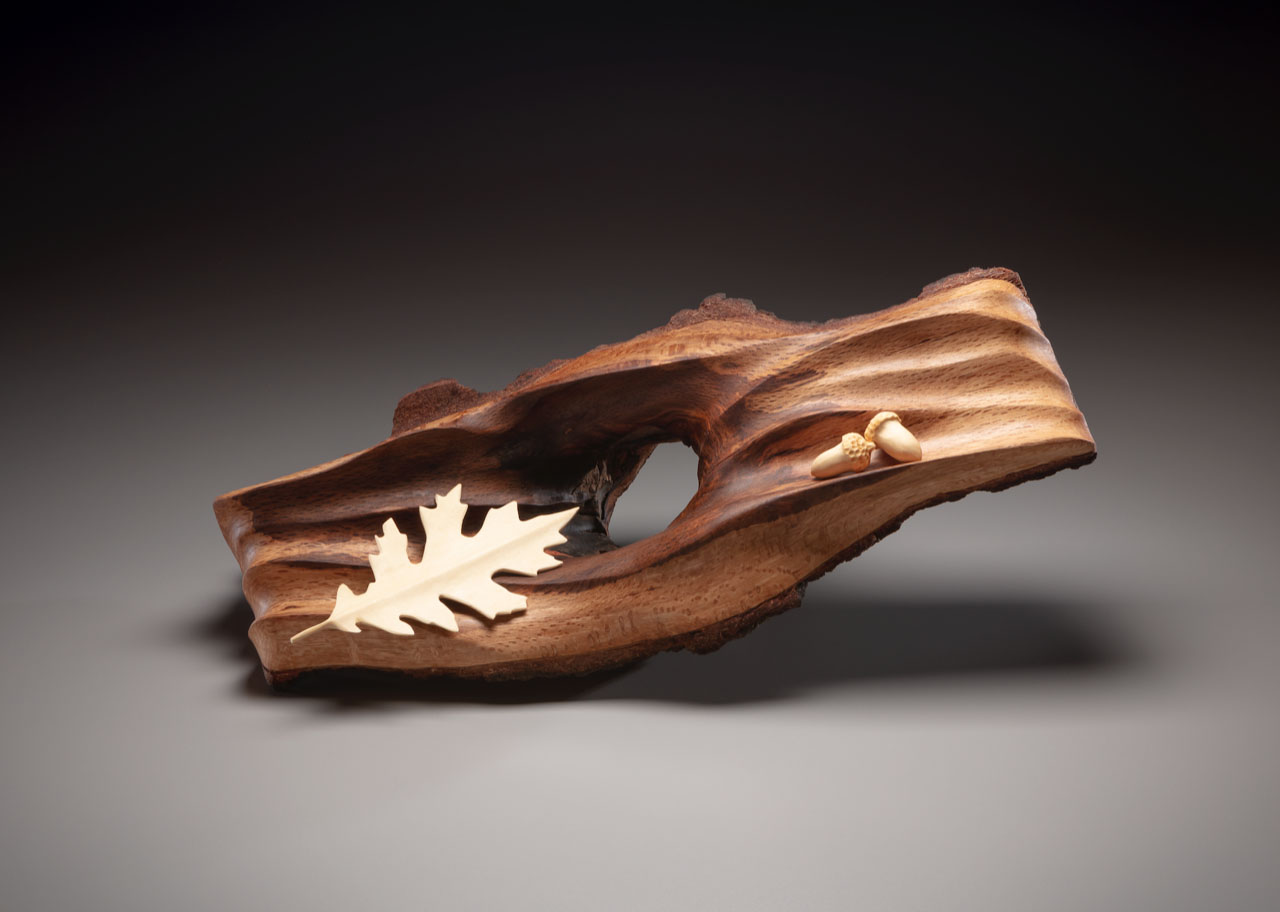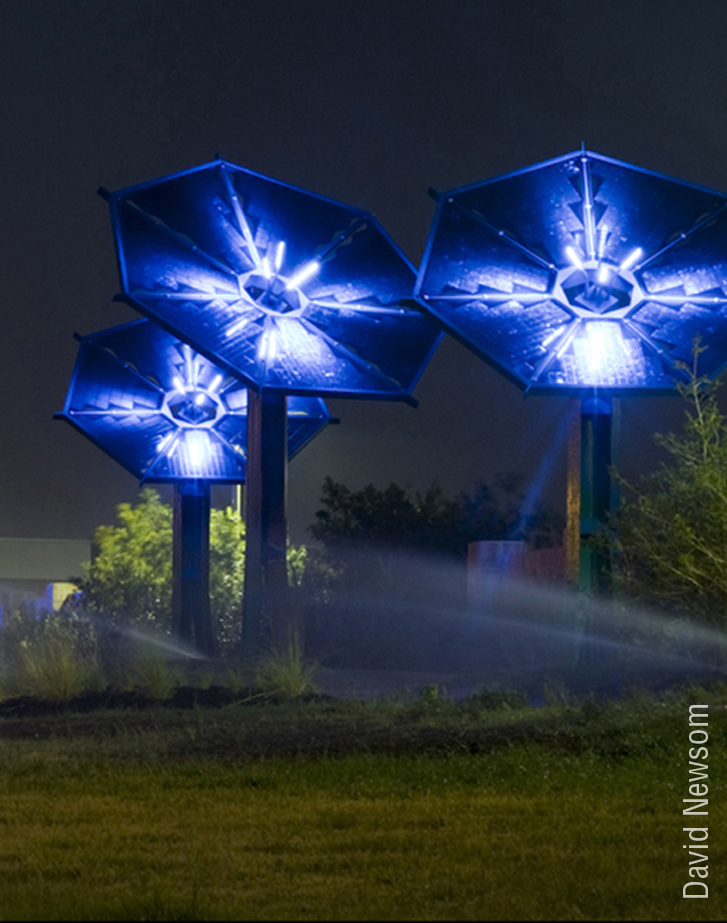Today, a pioneering woodworking artist, Holly Tornheim, won the “Honoring the Future® Sustainability Award” at the prestigious 2021 Virtual Smithsonian Craft Show. Holly Tornheim’s winning artwork, Ode to Oak, is a visual tribute to the majesty of the California black oaks surrounding her home in the Sierra Nevada Foothills.

Holly Tornheim. Ode to Oak. ©Holly Tornheim 2021. Courtesy of the artist. Photo by Jim Beckett.
The national award, which comes with a $1000 prize, recognizes an artist whose work educates the public about, or inspires or models, a sustainable response to climate change. Lloyd Herman, Founding Director of the Smithsonian Renwick Gallery, judged the entries.
“The Sustainability Award showcases art that captures our attention and imagination,” explains Honoring the Future’s Director, Fran Dubrowski. “It celebrates artists who use their powerful visual voices to show us what we can do to save a planet in peril.”
Tornheim designs and executes unique wood objects in her single person, off-grid, solar-powered studio. She takes care to ensure that her wood is sustainably sourced and that her process produces minimal waste: “The wood I use includes leftover pieces from furniture makers and also material from local brush clearing. All the non-domestic wood I use is either Forest Stewardship Council certified or remnants given to me by other woodworkers. All scraps remaining are burned for heat in my home.”

Holly Tornheim exploring the breathtaking scenery of California’s Lakes Basin
She particularly enjoys creating designs that respond to a unique piece of wood or to an intriguing conceptual challenge. Ode to Oak does both. The base of the piece is made from a black oak log she rescued from a firewood pile, deeming the wood too beautiful to be burned. The conceptual challenge: succinctly capturing, in one artwork, the black oak’s seminal role in the forest ecosystem.
The California black oak is a forest standout. Typically 30 to 80 ft. high, it can exceed 120 ft. in height when mature. Its bright green, deeply lobed leaves turn golden yellow in fall, contrasting brilliantly with the deep green conifers in its mixed hardwood home. The black oak is critical to wildlife survival, providing food and nesting sites for owls, woodpeckers, squirrels, deer and black bears. It is also historically important: its acorns provided tasty, highly prized food to the indigenous Native American Nisenan community. Indeed, in precolonial times, the Tribe took care to burn underbrush to protect the black oaks from boring insects.
Today, oaks are the U.S. National Tree. (The oak was chosen in 2004 by popular vote in a nationwide poll conducted by the Arbor Day Foundation. Congress then enshrined the choice in federal legislation.) A leading Congressional co-sponsor of the legislation, Senator Ben Nelson of Nebraska, observed: “The oak tree will now be as much a symbol of America as Thanksgiving Day, Old Glory, the Star Spangled Banner, and the bald eagle. It is a fine choice to represent our nation’s strength….”
But the intervening years have been hard on the mighty oak. Nearly one-third of U.S. oak species are now imperiled due to climate change, habitat destruction, development, agriculture, invasive pests and diseases. The outcome of conservation programs now underway remains uncertain. Oaks are difficult to conserve because their acorns do not survive the drying process needed for long-term storage in seed banks.
Against that background, Tornheim’s aptly titled artwork perfectly captures the stark environmental choice we now face. An ode can be a hymn of praise or an elegy. Which will our legacy be?

